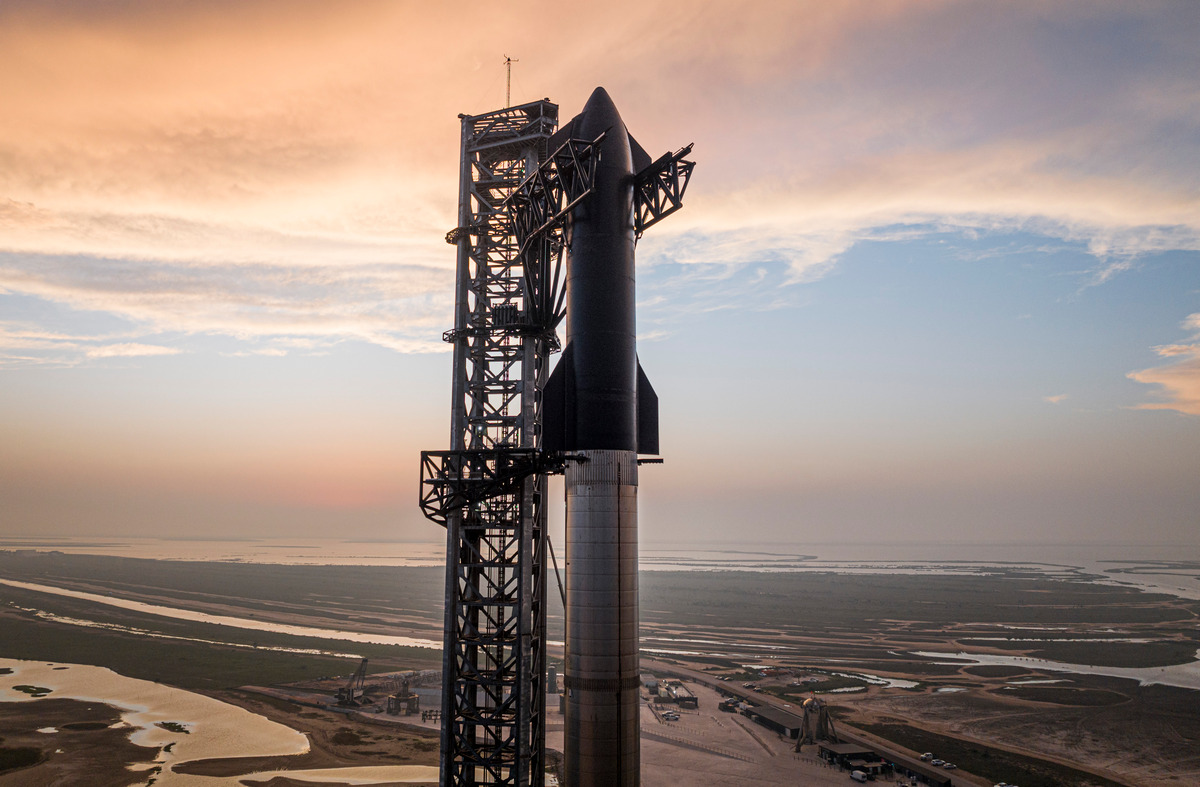SpaceX’s Starship Version 2: All We Know So Far
30th Nov 2023
Last week, SpaceX’s CEO, Elon Musk, revealed its ongoing efforts to undertake a substantial redesign of the second-stage Starship spacecraft, meaning the company is working on Starship V2.
The historical Starship test flight in April failed minutes after the launch. Unfortunately, Starship’s second launch on 18 November also ended with an explosion, as the spacecraft lost contact with the upper stage about 15 minutes after launch.
SpaceX intends to complete and launch four or five more Starship V1 prototypes before transitioning to the Starship V2 product line. Elon Musk noted that insights obtained from these upcoming flights will be incorporated into the development of the next-generation rocket.
What will Starship V2 be like?
On 24 November, Elon Musk shared a photo featuring four Starship upper stages standing vertically at SpaceX’s Boca Chica facility in south Texas. He said on X (former Twitter), these rockets are going to be “the last of V1.” In such a way, Starship is entering the next stage of its evolution.
Following Version 1, Starship’s Version 2 emerges as the subsequent stage in the company’s iterative development journey. While Starship is currently not functioning properly, considering the lack of launches ending with success, it embodies SpaceX’s ambitious vision for a fully reusable and cost-efficient launch system designed for interplanetary travel and boasting a high payload capacity.
However, it seems that there won’t be major changes to the next-gen Starship model. In a recent tweet, Musk mentioned that Starship V2 would contain more propellant, showcase a diminished dry mass (meaning the rocket’s weight without payload), and demonstrate enhanced overall reliability. It’s important to clarify that this refers to the Starship upper stage, not the Super Heavy booster.
The engineers are convinced that the design changes in Starship will be significant enough to speciate the ship, earning it the title of Version 2. So, it looks like SpaceX plans to assess the recent flight, implement minor adjustments, and aim for another near-orbit attempt with IFT-3. The upcoming mission is expected to utilize Booster 10 and Starship 28.
What changes to Starship V2 to expect: Raptor 3
Although specific details about the Starship V2 specifications were not disclosed, SpaceX has recently outlined potential changes to the next-gen Raptor engine.
The Raptor 3 will boast a higher Isp than its predecessor, generate 20% more thrust, and be reliable enough to eliminate the need for a heat shield. This elimination of engine shielding could lead to a significant reduction in mass. The existing Raptor 2 engines deliver 230 tons of thrust, while the anticipated thrust from the upcoming Raptor 3 engines is approximately 269 tons, signifying a 17% enhancement.
Additionally, Starship V2 might mark the first instance of incorporating nine Raptor engines on the vehicle, fulfilling a longstanding goal for SpaceX. In such a way, the added engines would increase payload capacity.
Ultimately, the company is contemplating a rise in propellant volume. This would entail altering the shape of the fuel tanks and potentially extending Starship’s height by 16 to 33 feet (5 to 10 meters). As a result, the next Starship model will feature expanded fuel capacity and an extended range for missions.
Star factory: the hub for mass production of Starship V2
In a move to ramp up Starship production, SpaceX is set to inaugurate the Starfactory production facility at Starbase in Texas. This assembly-line-style facility aims to achieve the ambitious goal of manufacturing 400-ft rockets at a rate of one per week. The primary responsibility of the facility will be the mass production of SpaceX’s latest Starships V2.






Thank you for your comment! It will be visible on the site after moderation.